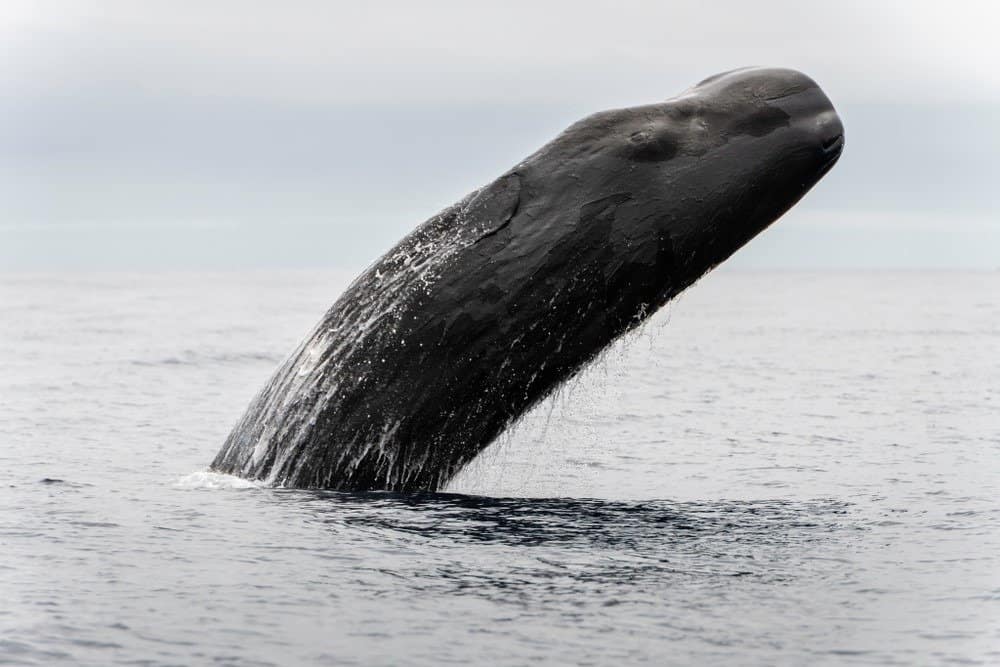
^ Lambert, Oliver de Muizon, Christian Urbina, Mario Bianucci, Giovanni (2020). "A New Physeteroid from the Lower Miocene of Japan". "The giant bite of a new raptorial sperm whale from the Miocene epoch of Peru". "A new stem-sperm whale (Cetacea, Odontoceti, Physeteroidea) from the Latest Miocene of Peru". ^ a b Lambert, Oliver Bianucci, Giovanni de Muizon, Christian (2008). Mammal Species of the World: A Taxonomic and Geographic Reference (3rd ed.). "Sperm Whale Phylogeny Revisited: Analysis of the morphological evidence". Zoological Journal of the Linnean Society. "Killer sperm whale: a new basal physeteroid (Mammalia, Cetacea) from the Late Miocene of Italy". "Cytochrome b and Bayesian inference of whale phylogeny". "Phylogenetic position of Platanista gangetica: insights from the mitochondrial cytochrome b and nuclear interphotoreceptor retinoid-binding protein gene sequences". Journal of the Marine Biological Association of the United Kingdom. "The nose of the sperm whale - overviews of functional design, structural homologies and evolution". ^ Huggenberger, Stefan Andre, Michel Oelschlager, Helmut H. Bianucci & Landini, 2006 suggest that Diaphorocetus, Zygophyseter, Naganocetus, and Aulophyseter antedate the inferred split of the Kogiidae and Physeteridae, thus would restrict the family Physeteridae to those genera that postdate this split (a cladistic view). The last cited paper also favours the grouping of Physeteridae and Kogiidae in a single superfamily, Physeteroidea, as has sometimes previously been suggested. The close relationship between extant Physeteridae and Kogiidae is confirmed in recent molecular studies using mitochondrial cytochrome b, on the basis of these analyses, their nearest relatives appear to be the Ziphiidae on one hand, and the Mysticeti and Platanistidae on the other. The earliest kogiids are known from the late Miocene, around 7 million years ago. The fossil record suggests that sperm whales were more common in the Miocene, during which basal lineages (such as Zygophyseter and Brygmophyseter) existed other fossil genera assigned to the Physeteridae include Ferecetotherium, Helvicetus, Idiorophus, Diaphorocetus, Aulophyseter, Orycterocetus, Scaldicetus, and Placoziphius, while kogiid fossil genera include Kogiopsis, Scaphokogia, and Praekogia. The earliest sperm whale fossils are known from the late Oligocene – about 25 million years ago, with an ancestry tracing back from the latest Eocene before diverging from the remainder of the odontocetid line, leading to the dolphins, and porpoises. All species congregate in 'pods' or herds, consisting of mostly females, calves, and adolescent males, although these pod sizes are typically smaller in the kogiids. #Sperm whale full#
Physeteroids do not reach full sexual maturity for several years. The single calf remains with the mother for at least two years, before being weaned.

Gestation lasts from 9 to 15 months, depending on species. Members of both families eat squid, fish, and even sharks. All three species dive to great depths to find food, although the sperm whale is believed to dive much deeper than either of the kogiids. Īnother common characteristic is the spermaceti, a semiliquid waxy white substance filling the 'case' or spermaceti organ in the whale's head, which plays a primary role in the production and directional manipulation of focused clicking sounds used for echolocation in the extant great sperm whale ( Physeter macrocephalus). Echolocation likely is a far more important sense to these animals than vision. The eyes of physeteroids are unable to swivel in their sockets, and possess only a vestigial anterior chamber.



In the kogiids, and sometimes also in the sperm whale, the teeth in the upper jaw do not erupt, and are sometimes altogether absent. All species have a large number of similar, and relatively simple, teeth. The nasal bones of these whales are distinctly asymmetrical, with the blowhole being located on the left side of the head in the sperm whale, this is near the top of the head, while on the kogiids it is further forward. The lower jaw is always relatively small and thin relative to the upper jaw. The bodies of physeteroids are robustly proportioned, with paddle-shaped flippers. The two kogiid species are much smaller, around 2.5 to 3.5 m (8 ft 2 in to 11 ft 6 in) in length, and weighing 350–500 kg (770–1,100 lb). The sperm whale ( Physeter macrocephalus) is the largest species of toothed whale, with adult bulls (males) growing to be about 15–18 m (49–59 ft) long, and weighing about 45–70 metric tons (44–69 long tons 50–77 short tons).







 0 kommentar(er)
0 kommentar(er)
